When Will Sigma Release Art Lens for Sony Fe Mount
Sony's total-frame mirrorless cameras have created a lot of fizz in the photography world. It's truthful that the FE lens options for Sony still are more than limited than the offerings for Canon and Nikon cameras, but the drove is growing and far more impressive in 2020 than even a yr ago. Below we intermission down the best Sony FE (full frame) lenses, including zooms and primes from wide angle to telephoto. Given Sony'south strong relationship with Zeiss, at that place are enough of loftier-end options that should brand even the most discerning photographers happy. For more than background data, see our Sony Iron lens comparison table and buying communication below the picks.
1. Sony 24-70mm f/two.8 GM ($one,998)
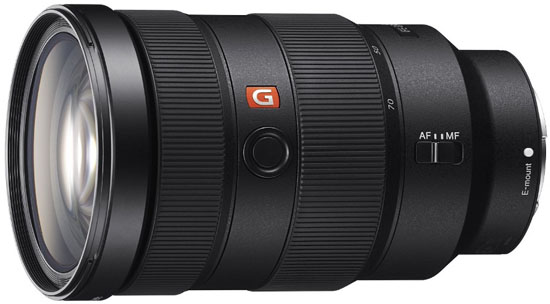
Category: Travel/portrait
Weight: 31.three oz.
What we like: Superb paradigm quality.
What we don't: Heavy and expensive.
The 24-70mm f/2.viii GM is the lens that fabricated Sony's full-frame mirrorless cameras truly competitive with Canon and Nikon. For Sony Fe, starting time came the mediocre Sony 28-70mm f/3.five-5.6, so the decent Sony 24-70mm f/iv, but neither was upward to professional person standards at this crucial focal length range. Enter the 24-70mm f/two.8 GM, which is super sharp, creates superb bokeh, and is extremely well built. All things considered, it may be the all-time 24-70mm f/2.8 on the marketplace from whatsoever brand.
If you're looking for the superlative Atomic number 26 zoom in terms of optical quality, the 24-70mm f/two.8 GM is it. But this lens does have its shortcomings. The first is toll—$ii,000 makes it considerably more plush than either the Catechism 24-70mm f/2.viii or Nikon 24-70mm f/2.8. It'due south too heavier than either of those two lenses at a whopping 31.three ounces. On a compact camera like the Sony a7R Iv, it definitely can feel similar a bulky piece of drinking glass. But the 24-70mm f/2.eight GM more than makes upwardly for it with image quality, which is the reason it is the premier FE-mount lens.
Encounter the Sony 24-70mm f/two.8 GM
2. Sony 16-35mm f/4 ($ane,098)
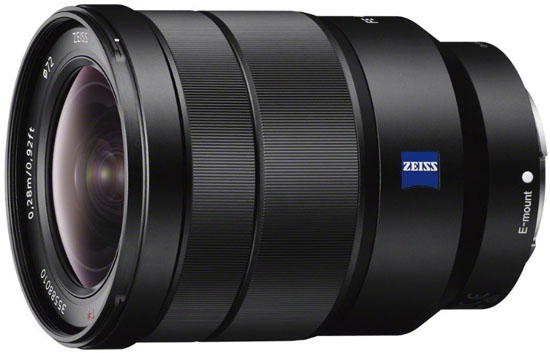
Category: Wide bending
Weight: xviii.3 oz.
What we like: Great optics and sunstars at a reasonable price and weight.
What we don't: Falls brusque of the Chiliad Main beneath in low-lite performance.
We'll start by saying that we were an early adopter of the Sony sixteen-35mm f/4. Based on extensive research, we felt it was the best 16-35mm f/4 on the market including those from heavy hitters like Canon and Nikon. And given that this was the first wide-bending zoom for Sony FE, a number of professionals readily adopted this lens during the wait for the inevitable GM version. And optical functioning from the f/iv version is cracking overall: the lens is sharp, has reasonable levels of distortion, creates splendid sunstars, and boasts a weather-sealed build for protection from the elements. For outdoor photographers using the Sony Alpha system, it's a must-have lens.
It'southward a tough phone call between the 16-35mm f/4 and the f/2.8 GM below. In some means, nosotros were hoping that the GM didn't alive upward to expectations (wishful thinking) and therefore it would take been like shooting fish in a barrel to stick with the f/iv. The tipping points for us have been cost and weight: the f/4 is considerably cheaper (effectually $900 at the time of publication) and weighs virtually half-dozen ounces less. Last just not to the lowest degree, many landscape photographers generally shoot in skilful natural light and don't need the extra end of aperture (information technology'due south generally much less important than with an indoor lens). If you frequently shoot depression-calorie-free photography, the f/two.8 may exist worth information technology (or better yet, an even faster prime). But most people volition be happy saving with the f/4.
See the Sony xvi-35mm f/iv
3. Sony 85mm f/1.8 ($547)
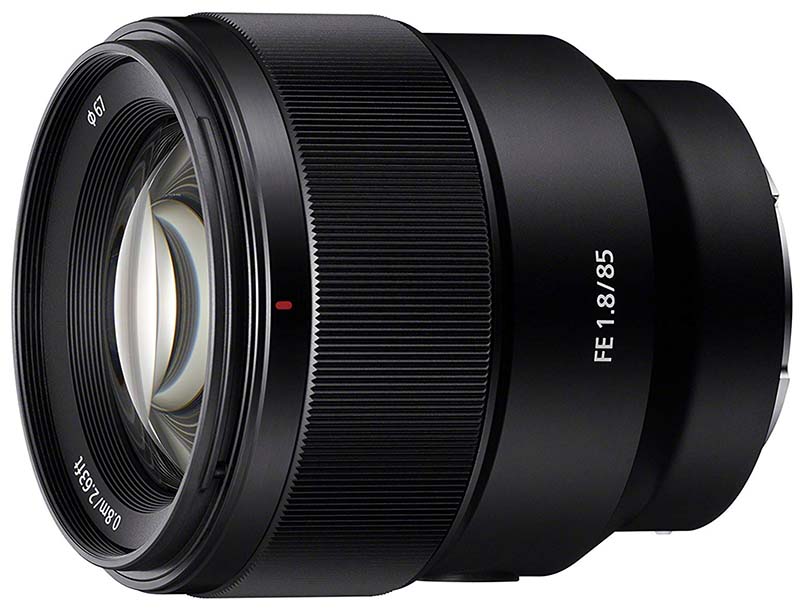 Category: Portrait
Category: Portrait
Weight: thirteen.1 oz.
What we similar: Super sharp, lightweight, and a great value.
What we don't: Slower than the Sigma and Sony 85mm f/1.4s.
Portrait photographers have a number of intriguing options at the 85mm focal length, but our favorite of the bunch is the Sony 85mm f/ane.viii. For effectually $550, you go first-class sharpness (even when wide open up), fast and accurate autofocus, premium build quality, and a reasonable weight of 13.ane ounces. All things considered, information technology's i of the best values on this listing and an extremely fun lens to have in your handbag.
In terms of competitors, we've included the Sigma 85mm f/1.iv Fine art below, which as well is tack abrupt and faster by ii-thirds of a stop, but incredibly heavy at a whopping 39.1 ounces. From Sony, the 85mm f/1.4 GM is another enticing pick—we absolutely dear the GM line and the image quality that it produces. However, the f/1.4 is more than than three times the cost of the f/1.8 and more than than double the weight, and it may fifty-fifty be a petty softer to boot. At the end of the day, all iii are top-notch portrait lenses, but nosotros like the value of the Sony 85mm f/i.eight.
Meet the Sony 85mm f/i.viii
4. Sony 55mm f/1.viii ($898)
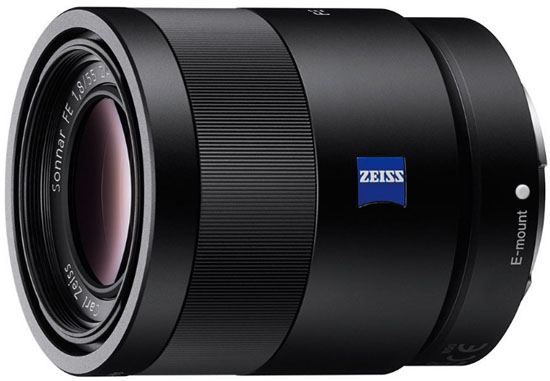
Category: Travel/portrait
Weight: 9.ix oz.
What we like: Much lighter and cheaper than the 50mm f/1.4.
What we don't: If you're a bokeh fanatic, this lens falls a little short.
For our top "normal" lens for Sony full frame, it was a close call between the 55mm f/ane.8 and the 50mm f/1.4 below. Professionals and enthusiasts love the faster f/1.iv maximum aperture of the latter, just the 55mm f/1.8 offers great sharpness and is cheaper. Both lenses are far superior to the disappointing 50mm f/1.eight, which hits an attractive price indicate but is just not upwardly to the standards of Sony'southward full-frame cameras.
From an image quality standpoint, the 55mm f/one.viii is surprisingly impressive. You get a whole lot of sharpness and bokeh for an f/one.8, and autofocus is first-class. More, the 55mm f/ane.8 is considerably lighter than the 50mm f/1.4 (9.9 ounces vs. 27.4 ounces). And with the loftier ISO capabilities of Sony cameras, in that location really isn't much reason to spend the additional $500 to gain less than a cease in aperture. The truth is that you lot can't go wrong with either, simply nosotros adopt the smaller size and lower price of the f/1.viii.
See the Sony 55mm f/1.8
five. Sony 24-105mm f/4 ($1,085)
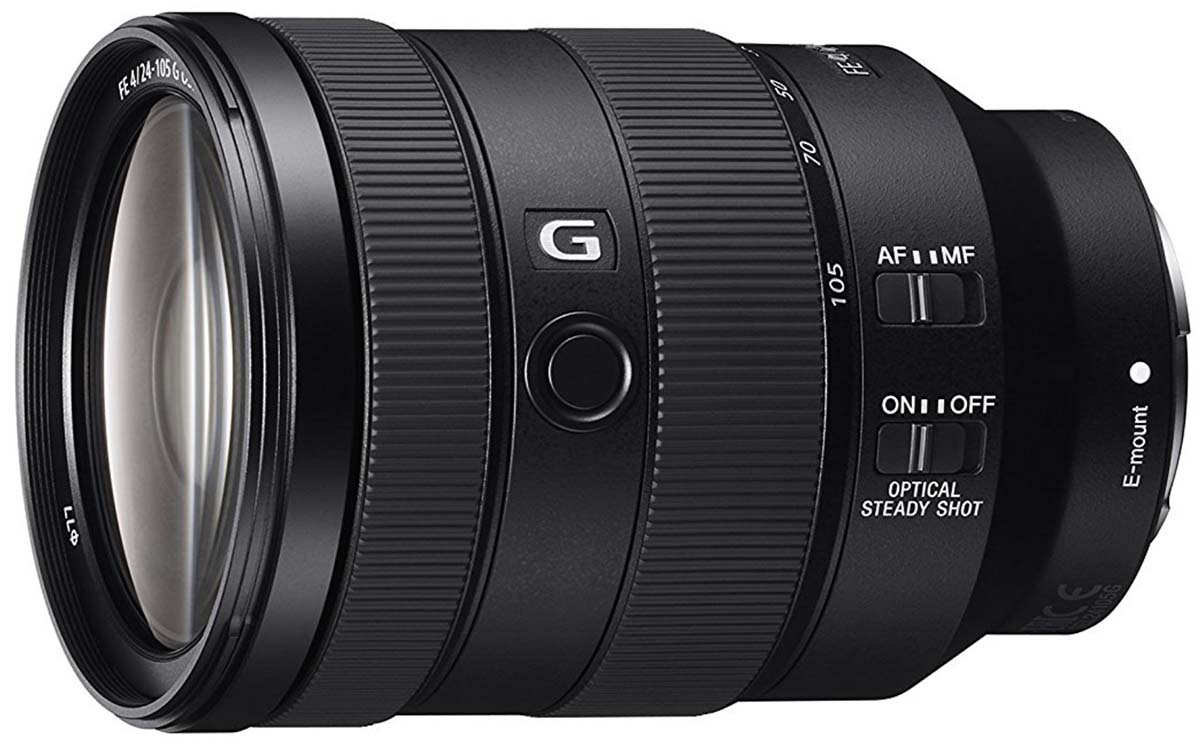
Category: Travel/portrait
Weight: 23.4 oz.
What we like: A do-everything lens at a proficient cost.
What we don't: Can't beat the optics of the 24-70mm GM above.
Before the 24-105mm f/4, the Sony lineup felt like it was missing that reasonably priced, Swiss Ground forces Knife of lenses. The quondam 24-70mm f/4 below left most shooters feeling underwhelmed, and especially given the ultra-high resolutions of Sony'south latest mirrorless camera models. And realistically, the big focal length range of the 24-240mm means that it'south lacking in pro-level optics. Merely with their 24-105mm f/4, Sony has a winner. At but under $1,100, this lens offers versatility and impressive corner-to-corner sharpness for everything from wide-angle photos to portraits.
Many people considering this lens are on the argue betwixt information technology and the 24-70mm GM above. What are the major differences, aside from the price? You'll discover more baloney and vignetting from the 24-105mm, which tin can be corrected fairly easily in post processing. And you volition exist sacrificing depression light performance and depth of field with the aperture maxing out at f/4. Just with the high ISO capabilities of Sony's latest cameras, this may be an acceptable trade-off for the toll savings and increased reach. For a workhorse lens for travel and everyday use, the 24-105mm is a smashing option.
See the Sony 24-105mm f/4
6. Sony seventy-200mm f/2.8 GM ($two,398)
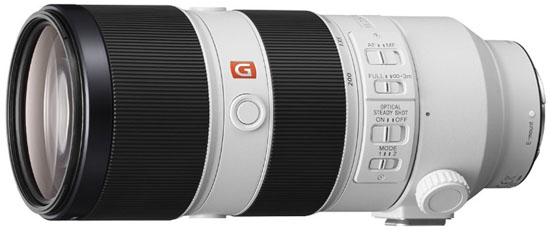
Category: Telephoto
Weight: 52.2 oz.
What we like: Pro-class image quality and build.
What nosotros don't: Super heavy and expensive.
There may exist some M Chief fatigue by the terminate of this article, but this premium lens series is merely that good. We previously had the seventy-200mm f/4 ranked higher due to availability issues with the f/2.8 GM, but that has been resolved and it's now readily in stock online and in stores. Despite the hefty weight and toll tag, the 70-200mm f/2.8 does not disappoint. The lens is super sharp, focuses quickly and accurately, and produces creamy bokeh. If image quality is your top priority in a telephoto lens, it'southward a articulate choice: go with the GM.
The good news is that the Sony 70-200mm f/4 is no slouch. That lens is reasonably abrupt (the images do tend to soften up a chip toward the corners), much lighter than the f/ii.8 at 29.half-dozen ounces, and $1,000 cheaper. Additionally, both of these lenses offer epitome stabilization, which proves to be incredibly useful when utilizing the college ends of these focal lengths. But we have a very hard time passing on a G Master lens when available, not to mention the f/four is good only not not bad from an optical perspective. For even more attain, encounter the 100-400mm below (and yep, it's a GM).
See the Sony 70-200mm f/ii.8 GM
7. Zeiss Batis 18mm f/ii.eight ($1,274)
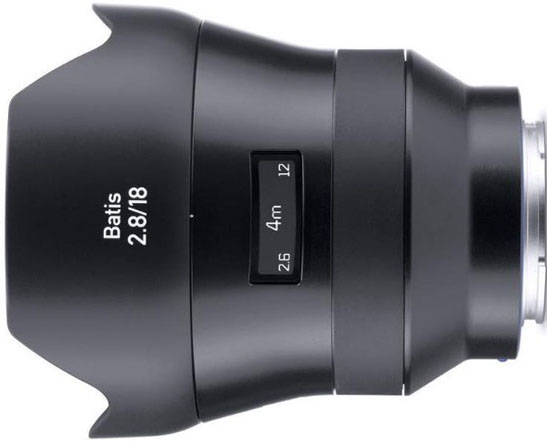
Category: Broad angle
Weight: 11.6 oz.
What we like: Incredible sharpness and color rendition.
What we don't: Not heavy just a petty bulky.
A full-frame mirrorless camera like the Sony a7R IV is a super bonny option for serious mural photographers, with a low weight and loftier-resolution sensor. And although the xvi-35mm f/ii.8 below may exist the nigh versatile wide-angle pick for FE, the Zeiss Batis 18mm f/2.8 is the premier prime. At this focal length, information technology'due south a dream pairing for the a7R IV.
Just how good is the Batis 18mm f/two.8? It's extremely sharp all the fashion to the corners (Zeiss primes are known for their sharpness), has little distortion, incredible color rendition, and fast autofocus. In addition, the lens is reasonably light at 11.vi ounces and congenital to terminal. Other wide-angle prime options from Zeiss include the 21mm Loxia, but that lens is manual focus and not quite as broad as we prefer for landscapes.
Run into the Zeiss Batis 18mm f/ii.8
8. Sigma 35mm f/1.iv Fine art ($695)
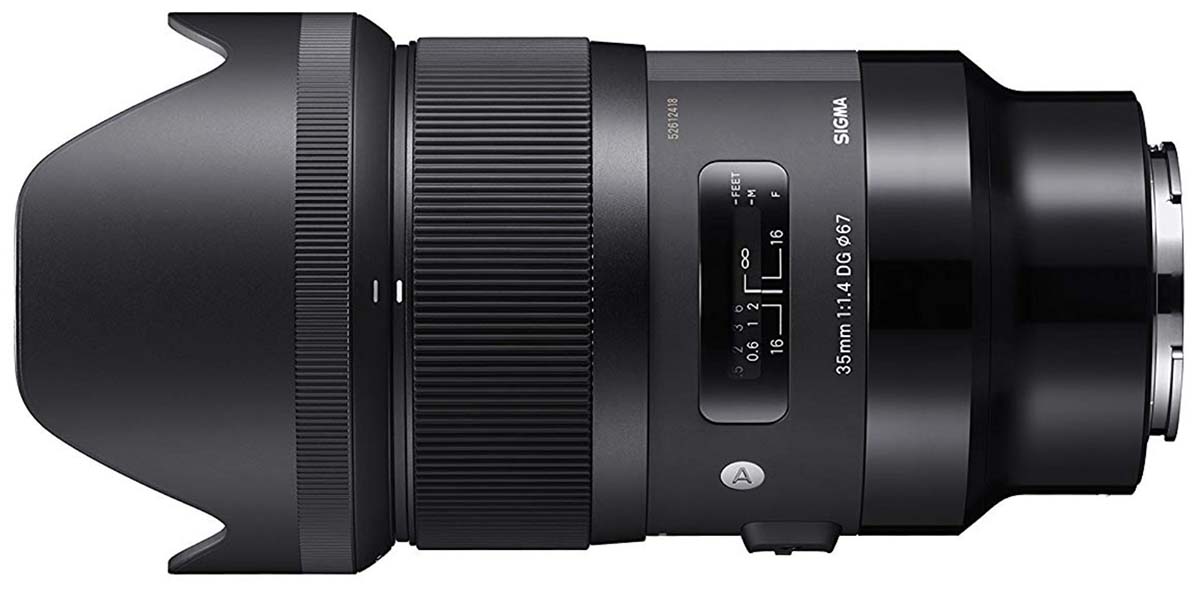 Category: Travel/portrait
Category: Travel/portrait
Weight: 23.4 oz.
What we similar: Super abrupt and way cheaper than the Sony equivalent
What we don't: Autofocus is slightly slower than the Sony 35mm f/i.4
If you shoot a lot of street and travel photography and are looking for a unproblematic, high quality slice of glass to comprehend nearly of your needs, we'd highly recommend picking up a 35mm prime number. Unfortunately, the two available options from Sony are either a bit underwhelming (the 35mm f/one.8) or overpriced (the 35mm f/1.4). Enter Sigma'due south Art line, which launched with Sony mounts and comes to the plate in a big fashion with its 35mm f/1.four. This lens is super sharp and will save you a ton compared to the Sony equivalent.
Aside from the common complaint of Sigma lenses existence bulky and heavy, the major business concern with the 35mm f/1.4 Fine art is the speed of the autofocus. You'll become more than hunting than with Sony'south native lenses and the Sigma can have a hard time locking in, which can be quite frustrating when shooting moving subjects. Reports on this topic are mixed, yet, and the cost savings is pregnant enough that the value and paradigm quality may outweigh any autofocus concerns.
See the Sigma 35mm f/1.4 Fine art
nine. Sony 16-35mm f/two.viii GM ($1,998)
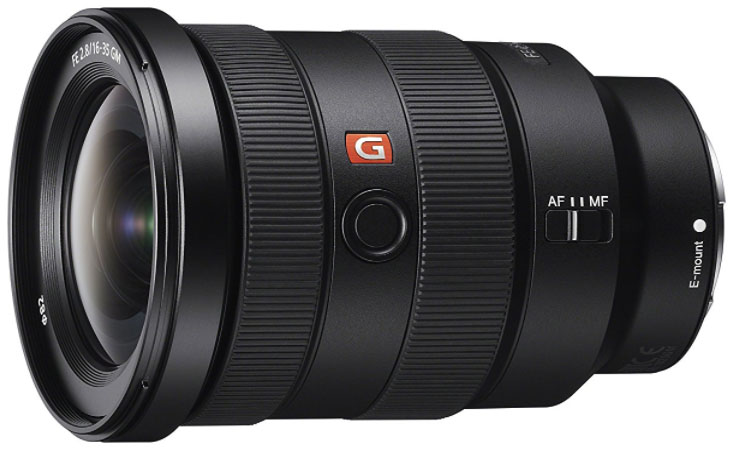
Category: Wide bending
Weight: 24 oz.
What we like: Superb optical performance overall.
What we don't: Pricier and heavier than the f/four version above.
Back when merely the 16-35mm f/four was in existence, we were quite happy with the prototype quality provided past that lens. But Sony subsequently added the Grand Main version, which—for serious landscape photographers and other wide-angle professionals who frequently shoot at night—is hard to decline. But put, this lens is stunning in terms of performance. It's extremely sharp all the way to the corners, excellent in low light for a wide-angle zoom, and creates well-baked, life-like images that are difficult to replicate outside of the GM family unit.
The real question is whether you should spend upward for the 16-35mm f/2.viii, which is quite pricey at effectually $2,000. The f/4 version described above is a top-notch lens in its ain correct, creates better sunstars, and saves you lot virtually $900 in cost and virtually 6 ounces in weight. Moreover, most people don't use a 16-35mm lens every bit often in depression light equally a more indoor-friendly zoom like a 24-70mm f/2.viii, plus Sony's latest cameras have superb ISO sensitivity. The reply is that both are fine choices, simply the f/4 is the more practical option for well-nigh people and uses.
Run into the Sony xvi-35mm f/2.8 GM
10. Sony 50mm f/1.four ($ane,498)
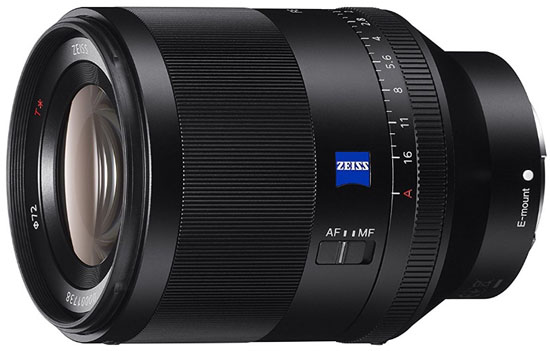
Category: Travel/portrait
Weight: 27.4 oz.
What we similar: Better low light performance than the 55mm f/1.8.
What nosotros don't: Heavy for a prime.
As mentioned in a higher place, we appreciate the lower cost point and smaller size of the 55mm f/1.8, merely for those who want even more low light performance and bokeh, the Sony 50mm f/1.4 is the ticket. This lens is tack sharp even when wide open up, produces creamy bokeh that you simply can't replicate with a slower lens, and boasts excellent build quality. All things considered, it's the real deal at 50mm.
The issues with the Sony 50mm f/1.4 are that it'south super heavy for a prime and quite expensive. Both are piece of cake to overlook if this is your about used focal length, but the 55mm f/1.8 does a pretty good task without those downsides. And if y'all have a true analogousness for 50mm and deep pockets, there's e'er the Meyer-Optik Nocturnus 50mm f/0.95 II, which is available for Sony mirrorless for around $3,000.
Run into the Sony 50mm f/1.four
8 Sony FE Lenses That Missed the Cut
eleven. Sony 24-240mm f/3.5-6.3 ($948)
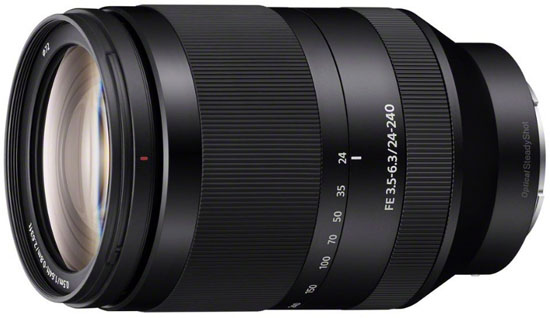
Category: All-in-one
Weight: 27.5 oz.
What we like: The ultimate in convenience.
What we don't: Nosotros call back Sony a7 cameras deserve amend.
Amateur photographers often are attracted to the convenience of all-in-one lenses, and rightfully so. It takes nearly decision making and lens switching out of the equation. In other articles we recommend all-in-one lenses more highly, and particularly for APS-C cameras, but it'southward more difficult for such a stellar system like Sony FE.
The Sony 24-240mm f/3.5-6.three does comprehend a healthy range of focal lengths from wide bending to telephoto—it's the only lens on this listing that does and so. It's also reasonably priced: for effectually $950, you can replace an entire photographic camera pocketbook. However, from an optical standpoint, this lens just doesn't stack up. It's non particularly abrupt, has healthy levels of distortion, and the autofocus is mediocre. All in all, we understand the convenience gene and recollect it'south an okay solution for those on a upkeep, but for serious photographers, it ultimately falls brusque.
Meet the Sony 24-240mm f/3.v-6.iii
12. Sony 28mm f/2 ($448)
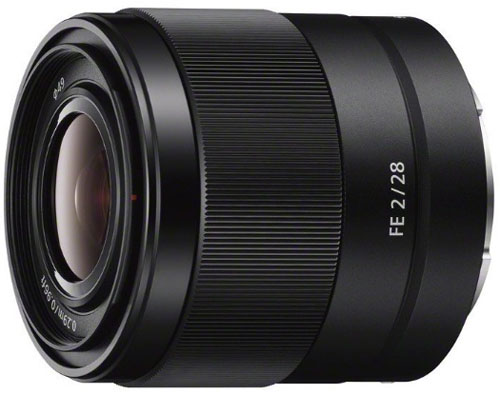
Category: Wide angle/travel
Weight: 7.1 oz.
What we like: Bargain basement price (for an FE lens).
What nosotros don't: Slightly bad-mannered focal length.
In that location is a lot to like nigh the 28mm f/2 from Sony, and well-nigh notably the cost. At around $450, this is the cheapest Atomic number 26 lens on this listing by quite a bit. Sony didn't partner with Zeiss on this one, but pretty much everything still lines upwardly: the lens offers good sharpness, solid depression light performance, and a sturdy build. The 28mm f/two certainly isn't targeted at professionals, but it's great for those getting started on a budget.
One notable upshot nosotros accept with the Sony 28mm f/2 is the focal length. 28mm is narrower than nosotros adopt for large landscape shots, nevertheless a trivial wide for travel photography and portraiture. Yous always can walk closer to your subject field to mimic a 35mm or 50mm lens, but 28mm certainly wouldn't be our first selection. But 42mm on Sony's APS-C cameras is more palatable, which is how many people finish up using this lens.
Meet the Sony 28mm f/2
13. Sony 100-400mm f/iv.5-5.6 GM ($2,498)
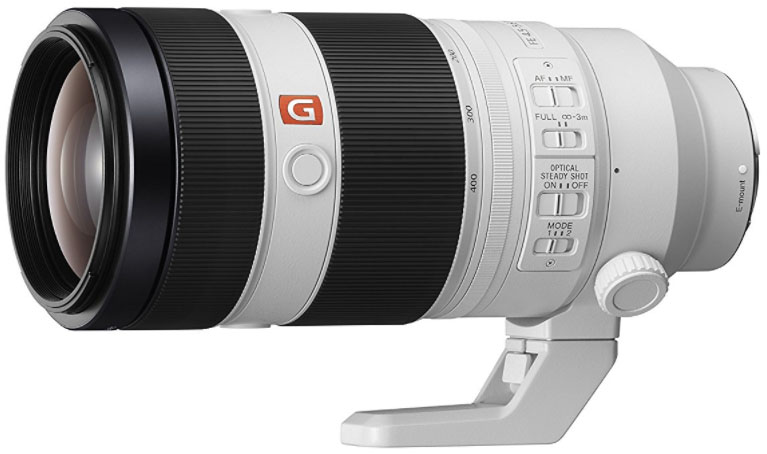
Category: Telephoto
Weight: 49 oz.
What we like: A super tele to match the capabilities of the Sony a9 and a7R IV.
What we don't: Some people may nevertheless want to add a teleconverter for even more reach.
Sony made a big splash with the release of the speedy a9 photographic camera body, merely they needed the telephoto lenses to lucifer. Enter the 100-400mm f/4.five-v.6, which is another premium lens in Sony'southward heralded G Principal lineup. For professional person sports and activeness photographers, it represents a viable telephoto zoom choice for Sony mirrorless, and will exist depended upon to perform during big events from the Super Bowl to the Olympic Games.
Impressively, the 100-400mm f/4.5-5.half dozen is roughly the same size as the seventy-200mm f/2.viii in a higher place and comes in reasonably calorie-free for a lens of this type at "merely" 49 ounces. For those who need even more reach, Sony does offering two teleconverters, a i.4x and 2.0x, both of which are compatible with this lens on the a9 and a7R Iv. In improver, Sony recently released the 200-600mm f/5.6-half dozen.3, along with 400mm f/2.eight and 600mm f/4 primes. If telephoto lenses were a weakness of Sony'south Iron lineup in the past, that simply is no longer the example.
Run into the Sony 100-400mm f/4.5-5.half-dozen GM
14. Sigma 85mm f/one.iv Fine art ($897)
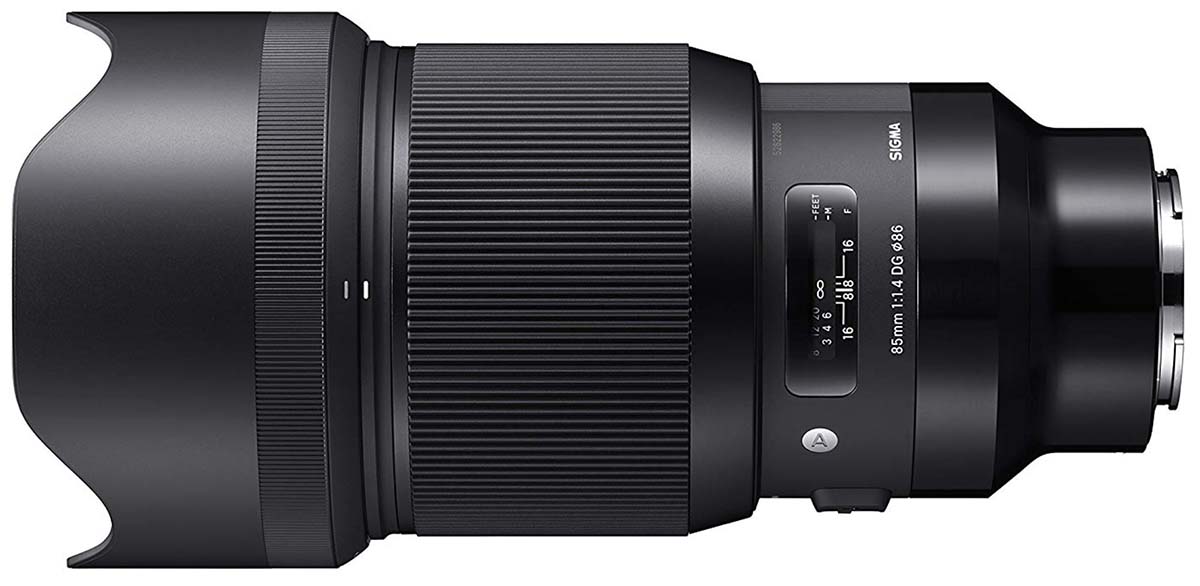
Category: Portrait
Weight: 39.nine oz.
What we similar: Sharper than Sony's 85mm f/1.4 GM at a lower price betoken.
What nosotros don't: Incredibly heavy.
Sigma's long-awaited Art lenses with Sony FE mounts finally hit the market, and the results take been stiff. One of our favorites is the 85mm f/ane.4, which is extraordinarily precipitous, creates beautiful bokeh, and stacks up competitively to Sony's f/1.4 GM in terms of epitome quality. When you cistron the significant disbelieve, serious portrait photographers should have a lot to like nigh this lens.
The weight of the Sigma 85mm f/i.iv is by far its biggest downside. At a whopping 39.9 ounces, it's 10 ounces heavier than the Sony 85mm f/1.4 GM, which makes carrying it around laborious and may be a deal breaker for those looking to shave ounces from their camera bag. In addition, the Sigma isn't completely weather sealed, although it does feature a surface handling and safety sealing at the mount connectedness point, instilling a bit more confidence for those venturing into tough weather.
Meet the Sigma 85mm f/one.4 Art
15. Zeiss Loxia 21mm f/2.viii ($one,000)
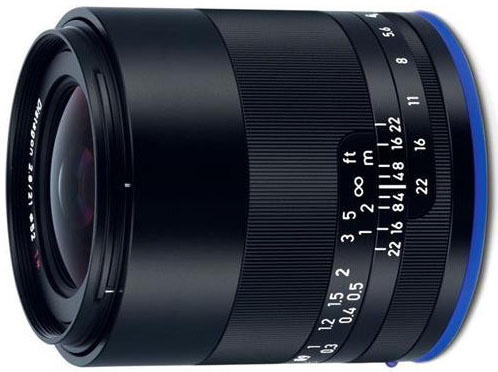
Category: Broad angle
Weight: 13.nine oz.
What nosotros like: Extremely sharp all the mode to the corners.
What we don't: Manual focus isn't for everyone.
If you're going to purchase a wide-angle prime for Sony mirrorless, Zeiss is the manner to go. In terms of options, the biggest bespeak of differentiation between the Loxia and Batis series is that the former is manual focus only. This may be a deal breaker for some, but those who try manual focus oftentimes find that information technology's relatively piece of cake, accurate, and fun.
Every bit far equally prototype quality goes, the Zeiss Loxia 21mm will non disappoint. It's ridiculously sharp all the style to the corners, reasonably fast at f/2.eight, and built like a true pro lens. It's a tough call between this and the Batis 18mm above, which has autofocus and is wider from a focal length perspective merely offers similar overall image quality. We think you tin can't get incorrect with either, and for those who specialize in wide-angle photography, a Zeiss prime number is a existent care for.
See the Zeiss Loxia 21mm f/2.8
xvi. Sony 70-300mm f/4.5-five.half dozen ($1,173)
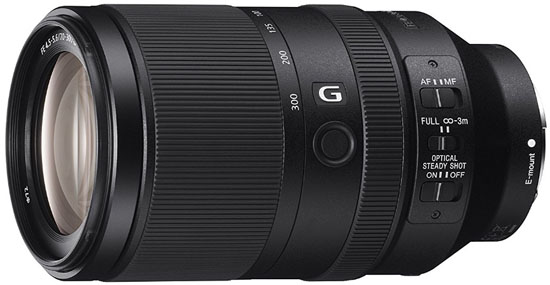
Category: Telephoto
Weight: 30.1 oz.
What nosotros like: A relatively inexpensive telephoto option for Atomic number 26.
What nosotros don't: Depression light performance and softness toward the edges.
Earlier the Sony 100-400mm GM above hit the market, the seventy-300mm f/4.5-v.6 was the only way to shoot further than 200mm. Only times have inverse, including the release of the Sony 200-600mm f/5.half dozen-6.three, resulting in more telephoto options for Iron. We'll beginning with the good news: this is Sony'southward cheapest true telephoto lens, and it's $200 less than the 70-200 f/iv. Nosotros do like the additional attain and it's a nice fashion to add together a healthy amount of versatility at the telephoto end of the spectrum without breaking the bank.
Unfortunately, the epitome quality of this lens leaves us wanting. Information technology tends to be sharp in the middle but softer toward the edges, and will struggle in low calorie-free with a maximum discontinuity of f/four.5-5.6. And on newer Sony full-frame cameras like the a7R Four, it'south going to have trouble standing up to the resolution of the paradigm sensor. All in all, we like the Sony lxx-300mm all-time for APS-C cameras (the focal length equivalent is a whopping 105-450mm), but less so for total frame.
See the Sony 70-300mm f/iv.5-5.6
17. Sony 12-24mm f/4 ($i,673)
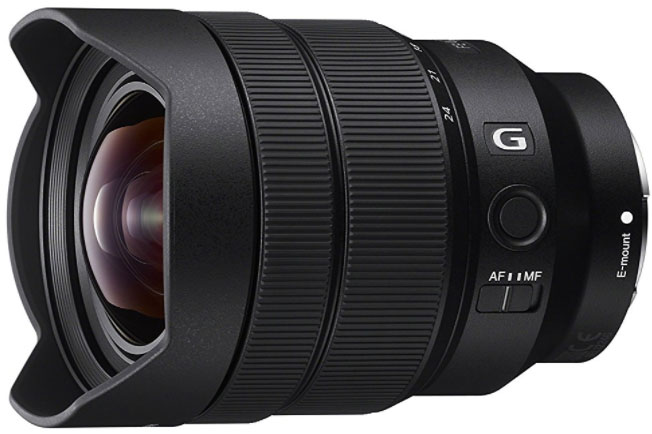
Category: Wide angle
Weight: nineteen.9 oz.
What we like: A true ultra-wide for Sony full frame.
What nosotros don't: Doesn't accept spiral-on filters.
It was big news when Sony released the 16-35mm f/two.8 GM higher up, but they coupled that with the 12-24mm f/4. Outset, we love the endeavor. We personally find that a quality 16-35mm goes broad plenty for nigh uses, but there certainly is demand for a true ultra wide and Sony answered the phone call. Although non a GM lens, the 12-24mm does pretty much everything well: it'southward crisp, has minimal falloff at the corners, and comes in relatively lite at 19.nine ounces. For broad-angle specialists who love pushing the limits, this is your lens.
What are the downsides of the Sony 12-24mm f/4? The offset is versatility: it's only worth spending the roughly $1,700 if you plan on using information technology frequently (and know how to, which is some other challenge). 2d, low lite functioning and bokeh fall curt of the 16-35mm GM. Finally, the lens does not take screw-on filters due to its bulbous shape. These issues bated, it's a really fun ultra wide that compliments the 24-70mm f/2.eight nicely in terms of focal lengths.
See the Sony 12-24mm f/4
18. Sony 24-70mm f/4 ($698)
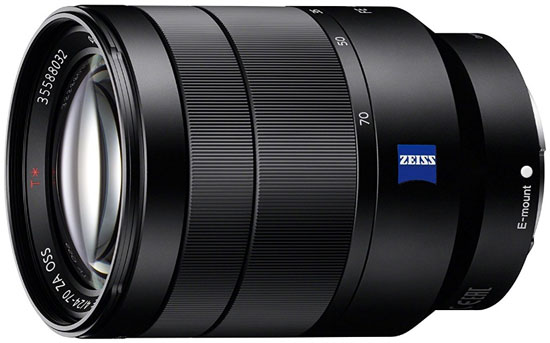
Category: Travel/portrait
Weight: 15.2 oz.
What nosotros like: Versatility at a expert price point.
What we don't: Baloney and softness.
Before the release of the 24-70mm f/two.8 GM above, the f/4 was the original Atomic number 26 lens option at this popular focal length. And while we want to like this lens, information technology just doesn't quite practise information technology from an image quality perspective. Baloney is heavy, softness is nowadays and specially in the corners, and the OSS paradigm stabilization is largely unnecessary (Sony has added built-in image stabilization to all of its latest camera bodies). Information technology's not a bad lens by whatever ways, and it matches pretty well with older Alpha cameras, only we prefer the f/2.8 or faster primes.
The main reason to choose the Sony 24-70mm f/4 is price. For around $800, y'all can throw it on whatsoever Alpha full-frame photographic camera and use it as your merely lens. In add-on, the weight of 15.2 ounces is quite respectable for a zoom lens of this type, which is less than half the f/2.8 GM. All in all, we become the draw of the 24-70mm focal length, which makes for a true workhorse lens, but the mediocre optics here give us pause.
Meet the Sony 24-70mm f/4
Sony FE Lens Comparison Table
| Lens | Price | Category | Weight | Discontinuity | Weather | Filter |
|---|---|---|---|---|---|---|
| Sony 24-70mm f/ii.eight GM | $1,998 | Travel/portrait | 31.3 oz. | f/2.8 | Yes | 82mm |
| Sony 16-35mm f/4 | $1,098 | Broad angle | xviii.3 oz. | f/4 | Yes | 72mm |
| Sony 85mm f/1.viii | $547 | Portrait | thirteen.1 | f/i.eight | Yes | 67mm |
| Sony 55mm f/1.eight | $898 | Travel/portrait | ix.9 oz. | f/ane.8 | Yes | 49mm |
| Sony 24-105mm f/4 | $1,085 | All-in-one | 23.iv oz. | f/four | Yeah | 77mm |
| Sony 70-200mm f/ii.viii GM | $2,398 | Telephoto | 52.2 oz. | f/ii.viii | Yep | 77mm |
| Zeiss Batis 18mm f/2.8 | $1,274 | Wide angle | 11.6 oz. | f/2.8 | Yes | 77mm |
| Sigma 35mm f/1.4 Art | $695 | Street/travel | 23.4 oz. | f/one.iv | Yes | 67mm |
| Sony 16-35mm f/2.8 GM | $i,998 | Broad angle | 24 o.z | f/2.8 | Yes | 82mm |
| Sony 50mm f/1.four | $i,498 | Travel/portrait | 27.4 oz. | f/1.4 | Yes | 72mm |
| Sony 24-240mm f/three.5-5.6 | $948 | All-in-one | 27.5 oz. | f/3.5-v.6 | Yes | 72mm |
| Sony 28mm f/2 | $448 | Street/travel | vii.1 oz. | f.ii | Yeah | 49mm |
| Sony 100-400mm f/4.v-v.6 GM | $2,498 | Super telephoto | 49.2 oz. | f/iv.five-five.vi | Yes | 77mm |
| Sigma 85mm f/ane.iv Art | $897 | Portrait | 39.nine oz. | f/i.4 | No | 86mm |
| Zeiss Loxia 21mm f/2.8 | $1,000 | Wide angle | 13.9 oz. | f/2.8 | Yep | 52mm |
| Sony 70-300mm f/4.five-five.6 | $one,173 | Telephoto | thirty.2 oz. | f/four.v-v.6 | Aye | 72mm |
| Sony 12-24mm f/4 | $1,673 | Wide angle | xix.9 oz. | f/4 | Yes | None |
| Sony 24-70mm f/iv | $698 | Travel/portrait | fifteen oz. | f/4 | Yep | 67mm |
Sony FE Lens Ownership Advice
- Zoom Lenses vs. Prime Lenses
- Maximum Aperture
- "GM" G Main Lenses
- The Sony/Zeiss Partnership
- Sigma's Growing Iron Lens Presence
- Adapters
- Weather Sealing
- Iron Lenses on APS-C Cameras
Zoom Lenses vs. Prime Lenses
The zoom vs. prime distinction varies by photographic camera blazon, and Sony now has a stiff batch of FE zooms (the f/two.8 trifecta of 16-35mm, 24-70mm, and seventy-200mm is now covered). In general, zoom lenses are more versatile roofing a range of focal lengths, while primes often are superior optically with faster maximum apertures and less distortion. Primes usually are smaller every bit well, but you lot may need to carry multiple lenses to cover your desired focal lengths.
Compared to Catechism's EF-mount lenses or Nikon's F-mount lens offerings, at that place even so are fewer Fe options of both types at this time (Sony is communicable upwardly, still). The upshot is that you should choose your zoom carefully and probably avoid some of the older models similar the 28-70mm f/3.v-5.6 and 24-70mm f/4. Sony's half dozen "GM" Grand Primary lenses are particularly strong and the drove of primes is growing including the recent addition of Sigma Fine art lenses, which is a very exciting development.
Maximum Aperture
Aside from focal length, maximum aperture is one of the most of import decisions you'll make when choosing a lens. In short, aperture is the size of the lens opening through which light passes, and it impacts merely nigh everything related to epitome quality: bokeh, depth of field, and sharpness. Aperture is measured in f-stops, and the lower the f-cease (f/two.8, f/1.viii, etc.), the larger the opening and the more low-cal can enter. You can see the full f-stop scale here, and lower numbers make for more desirable (and expensive) lenses.

In terms of numbers, we generally make the professional person cutoff at f/two.8. Lenses with this maximum aperture or faster are solid low light performers and can reach the flossy bokeh that professionals love (most of Sony's current GM zoom lenses are f/ii.8 or faster, for example). Primes are the fastest type of lens, reaching f/1.four for Sony Atomic number 26, while some cheap zoom lenses take a maximum aperture of f/4 or slower. For those looking to attempt out astrophotography or any type of nighttime shooting, lower numbers are a huge plus and it'due south non recommended to get anything slower than f/2.viii. It's worth noting that considering Sony's latest full-frame cameras have built-in image stabilization, photographic camera shake volition be less prevalent than with older models.
"GM" G Primary Lenses
A handful of years ago, Sony released its outset "GM," or Grand Principal, lenses, which are the premium full-frame zooms for Sony mirrorless. Equally of fall of 2020, there are ten GM lenses to choose from: the 16-35mm f/2.8 GM, 24mm f/1.iv GM, 24-70mm f/two.viii GM, 85mm f/one.four GM, 100mm f/2.8 GM, 135mm f/2.viii, seventy-200mm f/2.8 GM, and 100-400mm f/4.5-5.vi GM, 400mm f/2.8 GM, and 600mm f/4 GM.
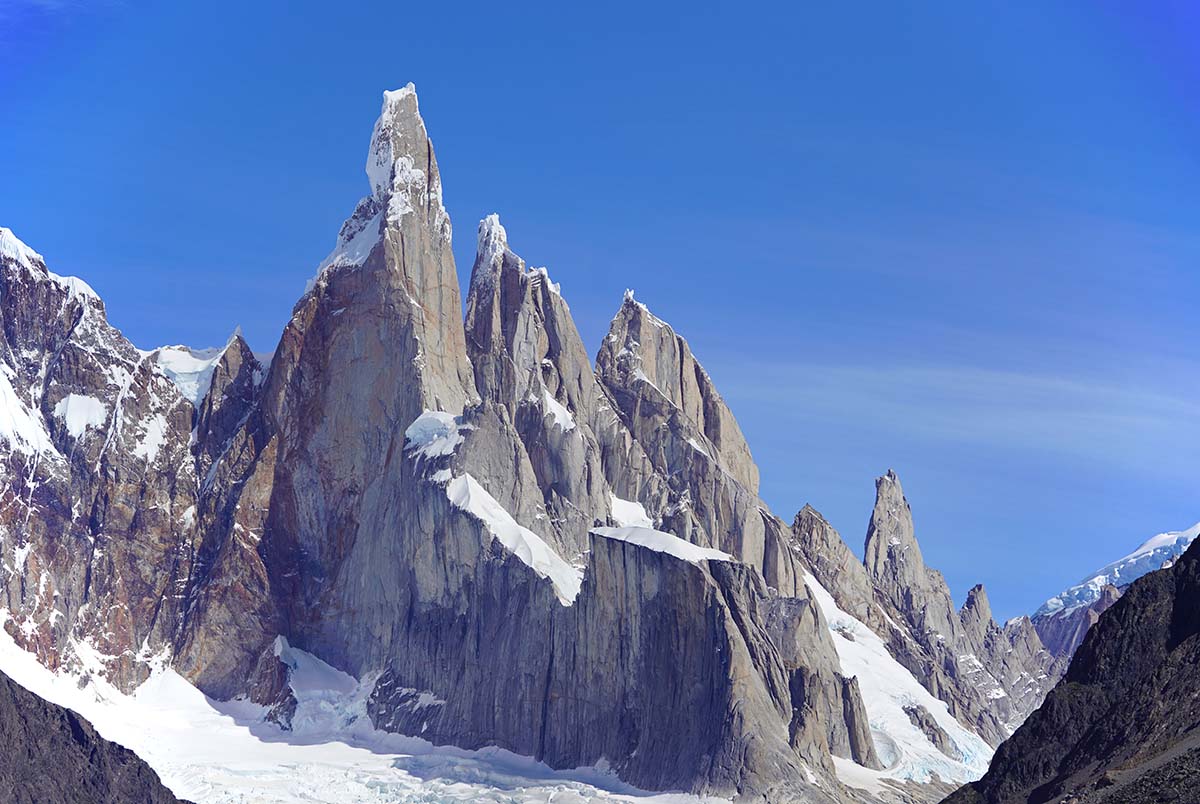
Similar to Catechism'due south "L" serial, Sony "GM" lenses are the all-time of the best. Y'all can look pro-class image quality including excellent sharpness, minimal distortion, and lifelike bokeh. In addition, the build quality of GM lenses is superb, with premium elements and weather sealing (outdoor and travel photographers make up a big office of Sony's constituency so this makes a lot of sense).
Interestingly, Sony mentioned in its GM press release that these lenses, "will inspire and 'wow' photographers and videographers for years to come." People in the industry written report that Sony is working on an eighty-megapixel camera next that shoots 6K video, and that GM lenses have been tested on and were built to match that powerful of an image sensor. If all that is true, it means that with GM lenses you are hereafter-proofing your purchase in a manner—it takes a very precise piece of glass to match that magnitude of an image sensor.
The Sony/Zeiss Partnership
The Sony/Zeiss matrimony is somewhat unique in the earth of photography and has been going on for two decades and counting. A large number of FE-mountain and East-mountain lenses are co-branded (called "Sony/Zeiss"). In add-on, Zeiss has created another bunch of its own lenses for Sony FE-mount cameras ("Batis" and "Loxia"). Because of Zeiss' stellar reputation in optics, these are highly regarded lenses that can go head-to-head with just almost anything on the market.
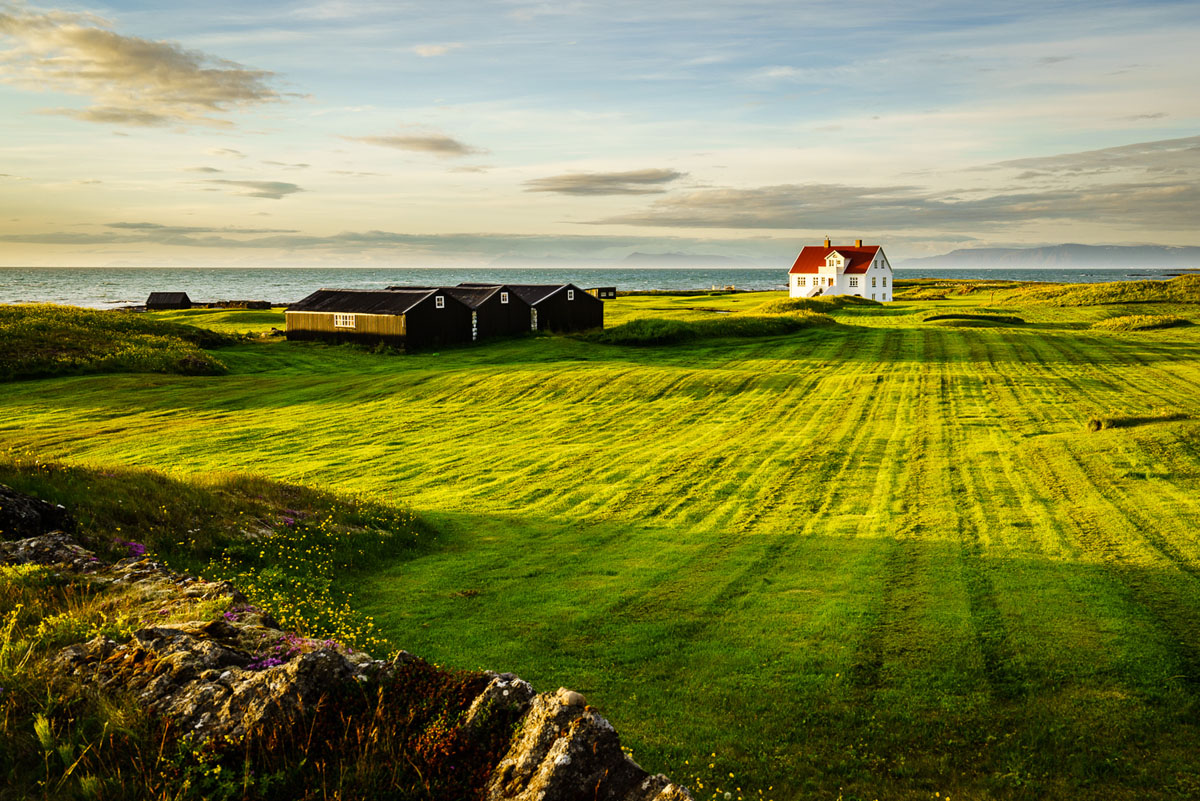
When ownership lenses for your Sony total-frame camera, keep a close eye on the title and the blue Zeiss logo on the barrel. Lenses with both "Sony" and "Zeiss" in the title are co-branded, while lenses with "Batis" and "Loxia" are exclusively Zeiss. It's besides worth noting that Sony's GM series of 1000 Master lenses described to a higher place are non associated with Zeiss, although they are regarded as being some of the finest zoom lenses for the Iron system.
Sigma's Growing FE Lens Presence
Third-party lenses abound for full-frame DSLRs, including from brands like Sigma and Tokina. For Sony'southward full-frame mirrorless cameras, Zeiss dominates the mural and calling that "third-party" is stretching information technology a bit (the relationship betwixt Sony and Zeiss is quite close). However, Sigma recently released Sony Fe mount versions of many of their "Art" lenses (our favorite is the 85mm f/1.4 Art) and plan to proceed rolling more out. This development has caused quite a stir in the market due to their remarkable sharpness, low calorie-free capabilities, and competitive pricing.
With the introduction of the FE mounts, Sigma has eliminated the demand for adapters that compromised performance—each lens has an autofocus drive command program that enables them to match the capabilities of the Sony bodies (in theory, at least). Then far, there have been some complaints nigh the speed and accuracy of the autofocus in a few of the Art series lenses, only that likely volition be mitigated by Sigma in future firmware updates. It'southward too worth noting that Sigma lenses generally are bulky and heavier than the field, but the cost savings and performance are what catches most people'south attending.
At time of publishing, most of the Sigma lenses available for Sony are primes, including the 24mm f/1.iv, 35mm f/1.4, 50mm f/1.4, 70mm f/ii.8, 85mm f/1.4, and 135mm f/1.8. Given the Sigma options for Catechism and Nikon full-frame cameras, we expect to see various zooms hit the market in the futurity. Regardless of whether you prefer Sony's more than expensive native lenses or Sigma's cheaper third-party models, it'south not bad to take more options.
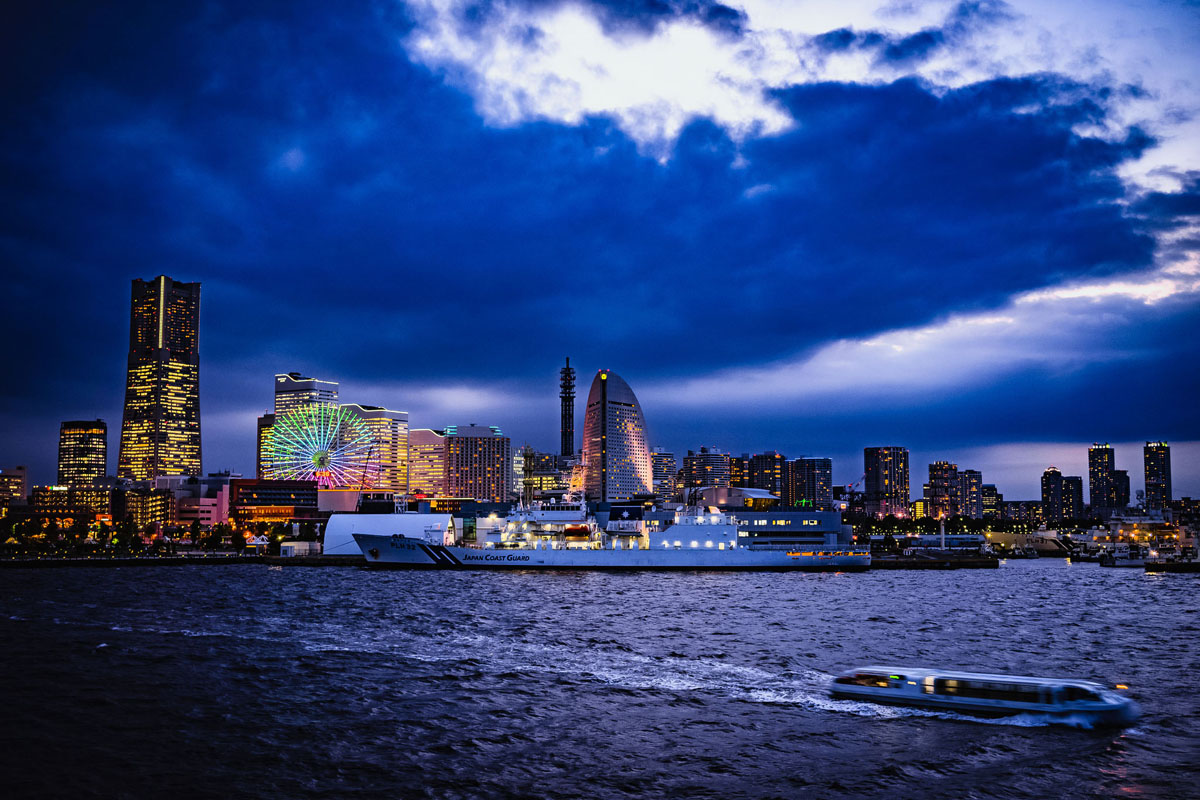
Adapters
If you lot already own Canon, Nikon, or third-political party lenses, you can buy a divide adapter for your Sony mirrorless camera. What are the downsides of going this route? More often than not, adapters are known for slowing down autofocus, which is a cardinal component of any lens. This makes adapters less attractive for those shooting action or video, simply information technology tin be a hindrance for stills, likewise. Adapters also tend to exist noisy, making you cringe a bit when changing aperture and grabbing focus. Finally, adapters are expensive and aren't exactly known for their reliability. The all-time adapter for Canon to Sony FE, for example, is $395 and is on its fifth rendition to date plus firmware updates. Yous definitely tin can have a positive experience with adapters, merely information technology is a potential headache that yous won't take when using native Atomic number 26 lenses.
Weather Sealing
Lenses are less at adventure from the elements than camera bodies, but however can be negatively impacted by dust, wet, and all of the things that can happen while shooting in extreme environments. Sony doesn't specifically advertise their lenses equally being completely weather condition sealed, just they do accept a certain level of dust and wet resistance built in. Typically, the more than expensive the lens is, the college quality the build volition be, which oft translates into information technology existence more than atmospheric condition resistant. Zeiss lenses in particular are known for being able to withstand the elements.
For those who want a petty more reassurance, we recommend keeping your camera covered by 1 of the many protective covers available. Information technology'due south also important to avoid changing lenses in inclement atmospheric condition equally breaking the seal between your lens and camera will expose your equipment's vulnerable points. If your lens does take on some moisture or gets a nice soaking in the pelting, stick it in a plastic bag and fill it with some silica gel packets (yes, the ones that overwhelmingly say "Do Not Eat"). These will help to suck the moisture out of the lens and hopefully return it to working order. In the worst case scenario, you lot can always contact Sony's Pro Support (if you qualify for and are canonical for the plan), and they'll do their best to repair it. With all of this, keep in heed the old cliche, "tools not jewels." You lot can't relish photos that y'all don't have.
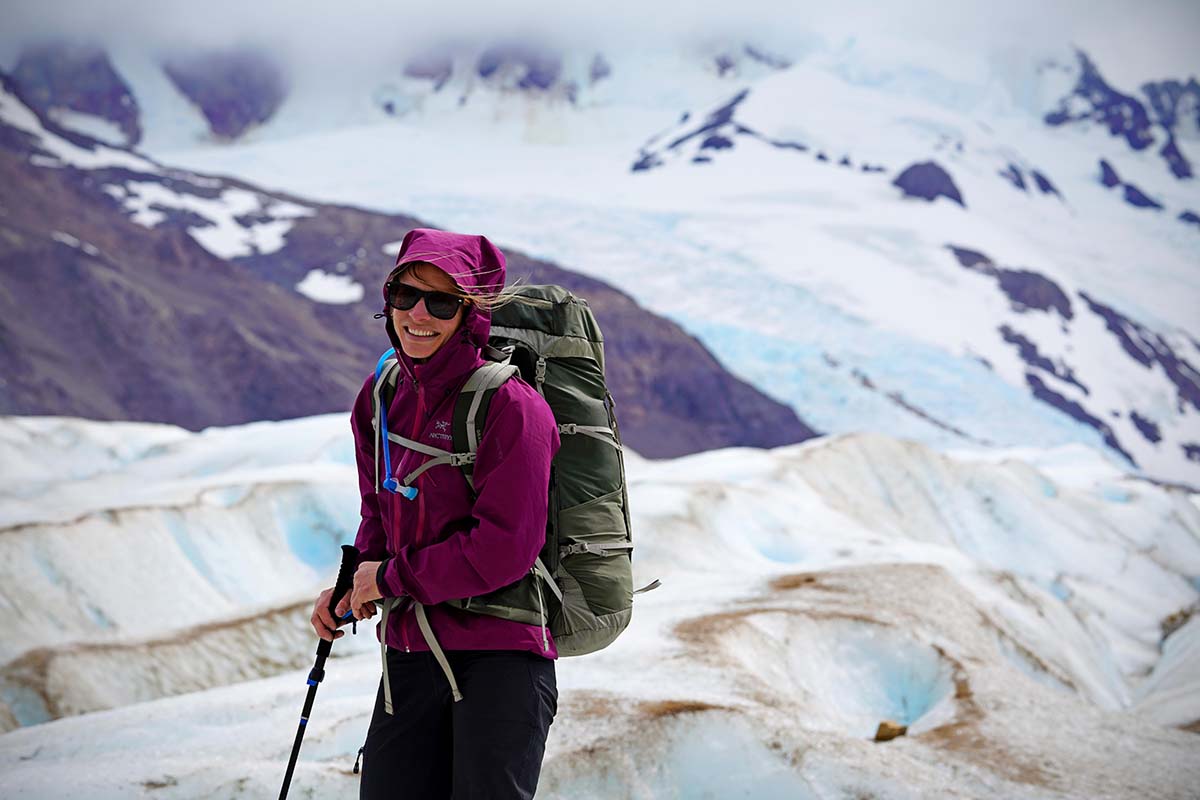
FE Lenses on APS-C Cameras
Sony has two lens mount types: Atomic number 26 (full frame) and E (APS-C). The adept news is that FE lenses are compatible on APS-C cameras. Total-frame lenses certainly are expensive and heavy compared to their crop-sensor counterparts, but you tin purchase lenses for your a7R 4 and use them on your a6600 when need exist. And the image quality probably volition be excellent as total-frame lenses are the existent bargain. Make sure to keep focal length equivalent in heed: Fe lenses will be ane.5x longer on an APS-C camera (a 50mm lens volition behave similar a 75mm lens, etc.).
On the other hand, Sony Eastward-mount (APS-C) lenses are not compatible on Sony total-frame cameras. There are a healthy number of E-mount lenses that continues to grow each year, simply none tin be mounted on your Sony full-frame camera.
Back to Our Top Sony Atomic number 26 Lens Picks Back to Our Iron Lens Comparing Table
Source: https://www.switchbacktravel.com/10-great-sony-fe-full-frame-lenses
0 Response to "When Will Sigma Release Art Lens for Sony Fe Mount"
Post a Comment